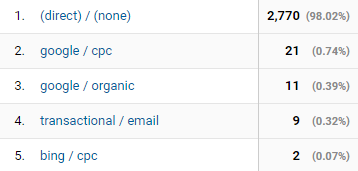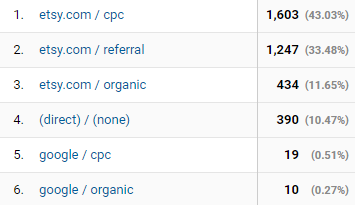This article is about how to view and explore the Google Analytics backup for your Etsy shop’s historical Universal Analytics data (2023 and earlier). If you did not backup your data before 1 July, it’s too late. Make sure you’re up to date with Google Analytics 4 instead.
No matter which method you used to backup your Etsy shop’s Universal Analytics data, you ended up with a bunch of spreadsheets.
Which are… not super user-friendly for actually viewing, exploring and using all this data!
At a basic level, you can use the in-built chart tools in your spreadsheet program of choice. But I recommend using Google’s free dashboarding program, Looker Studio (previously called Data Studio).
If you exported your data using my tailor-made UA backup tool for Etsy, I have built a Looker Studio dashboard to go with it. Here’s how to get it…
(Free mini-dashboard below)
Read more



